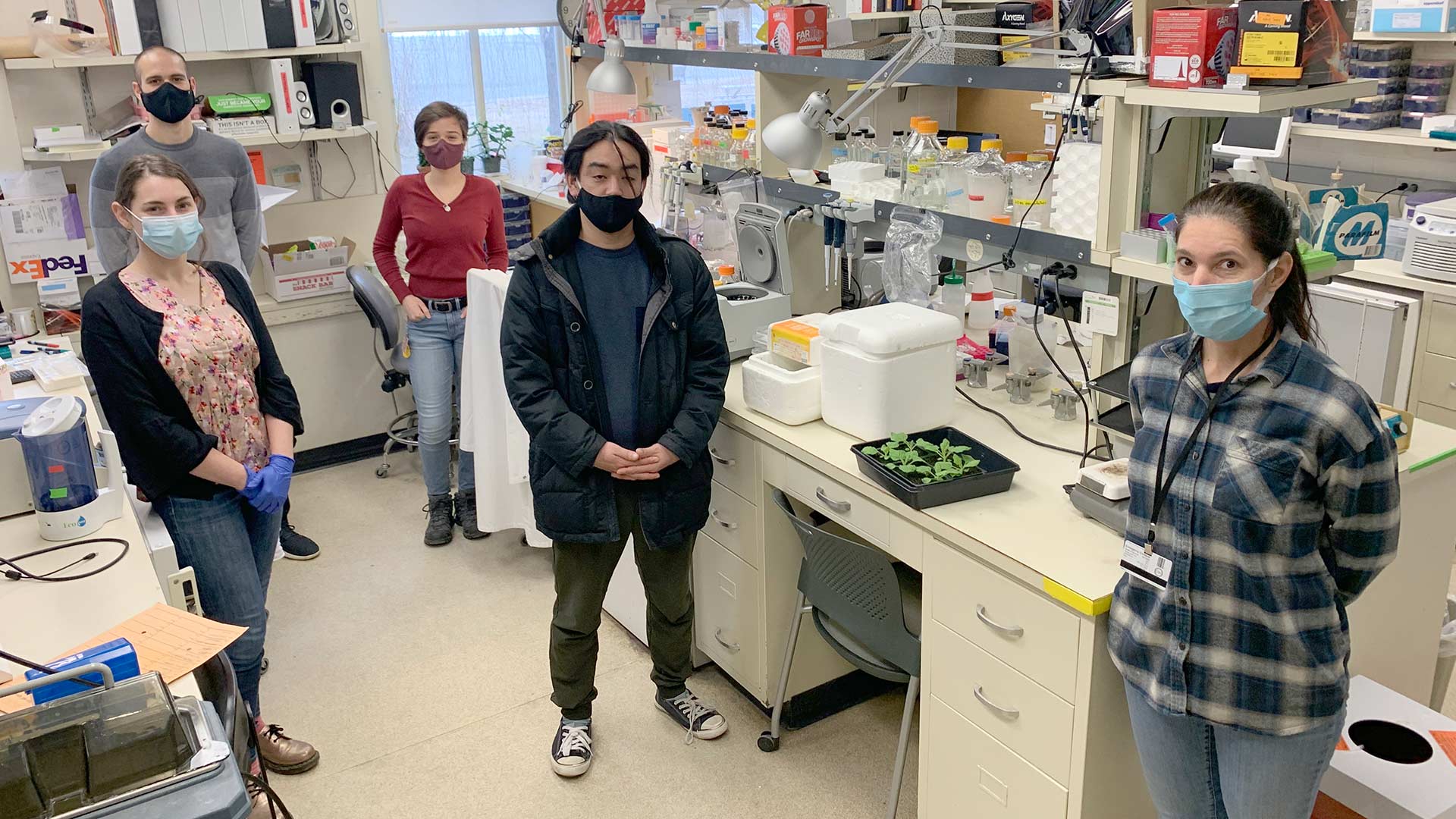In April 2020, Cold Spring Harbor Laboratory (CSHL) Professor David Jackson and CSHL Assistant Professor Ullas Pedmale wanted to contribute to the global scientific response to the COVID-19 pandemic. So, they combined plant science and coronavirus research. The two plant biologists used a modified tobacco system to grow coronavirus proteins in tobacco leaves. The goal was to produce large amounts of the proteins quickly and cheaply so virologists could use them to help develop a vaccine.
The tobacco system the researchers used is a well-understood method for expressing (producing) non-plant proteins. They constructed bacterial vectors containing coronavirus proteins to infect tobacco plant leaves. The treated plants expressed the inserted proteins in just three days. Pedmale says:
“So you can do this rapid prototyping, you can immediately make modifications in the constructs and expressing tobacco. And you don’t need really sophisticated systems to grow animal cells or bacterial culture. It’s very easy. Plants need soil, sun, and water. That’s all they need.”
The team selected two coronavirus proteins that trigger human immune system responses: the spike and the nucleocapsid proteins. Pedmale adds that coronavirus mutations in the spike protein are increasing infection rates in the winter of 2021. The tobacco system would work well to study these new variants.
For this project, Jackson and Pedmale worked with several researchers in fields outside plant biology. Only a few were virologists. Jackson says:
“It really shows a great strength for basic research rather than what we might call applied research. So for example, two of the major vaccines are based on messenger RNA and that was an idea that really came out of basic research, not something that was developed by a company, but a scientist decided to start this. There’s been a lot of basic research on messenger RNA, including at Cold Spring Harbor. And the idea that this could then be turned into a vaccine was kind of a high risk, high reward idea that has really paid off.”
Jackson and Pedmale succeeded in getting the tobacco to express a lot of viral protein, but neither of them specializes in isolating and purifying proteins. Jackson says that their work was a “proof of concept” and they hope other scientists will pick up where they left off. Pedmale said, “All of us came together because we know science works. The rapid pace of vaccine development was because everyone dropped what they were doing to work toward a common cause.”
The team posted their methods and findings as a preprint in bioRxiv.
Written by: Jasmine Lee, Content Developer/Communicator | publicaffairs@cshl.edu | 516-367-8845
Funding
Cold Spring Harbor Laboratory, National Science Foundation, National Institutes of Health
Citation
Lindsay, P., et al., “Rapid expression of COVID-19 proteins by transient expression in tobacco”, bioRxiv, December 29, 2020. DOI: 10.1101/2020.12.29.424712

